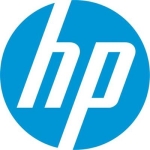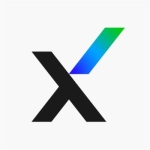What is our primary use case?
We're using it just to make sure that the customers, or our users, don't use any prohibited applications. We make sure that every application they use is on the allowed list. Any other application that is not only allowed is blocked until further notice. It's mainly to make sure that our organization is secure and that the software that the users are working on is secured too. This is the main reason. also to be aware and secured from any potential attack or ransomware etc.
What is most valuable?
The good thing about the product is that it's always scanning. It does real-time scanning for customers. If there's anything related to the applications that it's installed, for example, if an application needs some upgrades, or updates, or add-ons, we already have a server that is downloading this for the users, the computers. In terms of the laptops, we are not managing the laptops from the servers, since the users take the laptops with them and they are managing their laptops by themselves. There is any variability. The application gives us a notification on the Cloud so that we can handle this problem or make sure that the laptop is secured. The customers or the users don't have much experience to pick what is right and know what is wrong. It's a very, very informational application.
The initial setup is easy.
What needs improvement?
They need to do definition updates. Instead of the version, they just put an update on the portal, and each time we need to upgrade it. Sometimes it's hard to upgrade the offsite clients. Sometimes the internet that they are using is not that stable. It gives us a hard time. Every 30 or 40 days, there's a new version and we need to go and make sure our customer's laptops are upgraded.
It would be ideal if the updates would happen like Symantec updates or other antivirus solutions. The upgrade needs to deploy directly to the users.
For how long have I used the solution?
We've been using the solution for two years.
What do I think about the stability of the solution?
It's very stable. There are no errors or problems, even if there is something we need to do on the machine. Due to the configuration we already do, it's locking a lot of things that the users cannot do. Even if the administrator is working, it needs the Cortex XDR permission first. It's very stable and the configuration is easy in the portal. They are enhancing their configuration and its security constantly.
The only thing that is giving us a hard time is they have a lot of version upgrades. I don't know if it's better to do it as update packages and make the upgrades half-year, quarter a year, or every year. It should be done more regularly.
From an administrative perspective, it'll give us less headache. Each time you need just to go to the portal and make sure that you're testing the product, the upgrade before you deploy it, and then you deploy it. And then you figure out which computer doesn't have the version, and you figure out how to install it.
If it's a laptop on the other side, it'll take a long time, sometimes a week, to get the customer the upgrade. For installing the upgrade, we must do it. The users can't install this product by themselves. That's why it takes a while.
What do I think about the scalability of the solution?
The solution is scalable. We are using it for 80 or 90 people. It's a variety of different positions, from engineers to accountants.
We're changing solutions and moving to SentinelOne. We won't be increasing usage.
How are customer service and support?
They are very helpful and they respond very fast. If there's any ticket open they make sure that they fix the problem the first time. I didn't face any problems with them.
How would you rate customer service and support?
Which solution did I use previously and why did I switch?
We are currently moving to SentinelOne.
How was the initial setup?
It is a straightforward setup. It's not overly complex or difficult. The deployment took a maximum of two hours.
I just installed it first on one of the testing machines and I tested the software package to see if it was still working. Then I just deployed it to the users and I made sure that it was working fine. It might take one day to deploy to the users if I test the version on the test machine first.
What about the implementation team?
I handled the implementation myself.
What's my experience with pricing, setup cost, and licensing?
Corporate is responsible for licensing. I don't know anything about the pricing.
What other advice do I have?
We are customers and end-users.
We're using the latest version of the solution.
Palo Alto is a big company. They are very good at security, so it's good if it's the first time a company is using this product. However, we are moving to SentinelOne as we are corporate. That means, if there is one branch upgraded or moved to something, we must follow. We are following our corporate instructions. If I was given the choice, I would be still using Cortex XDR as it's fulfilling my need.
I'd rate the solution eight out of ten. The downside is each time I go to the portal and I check the versions, it's outdated. You need to upgrade each month or every forty days and it's a lot.
Which deployment model are you using for this solution?
Private Cloud
Disclosure: My company does not have a business relationship with this vendor other than being a customer.




















